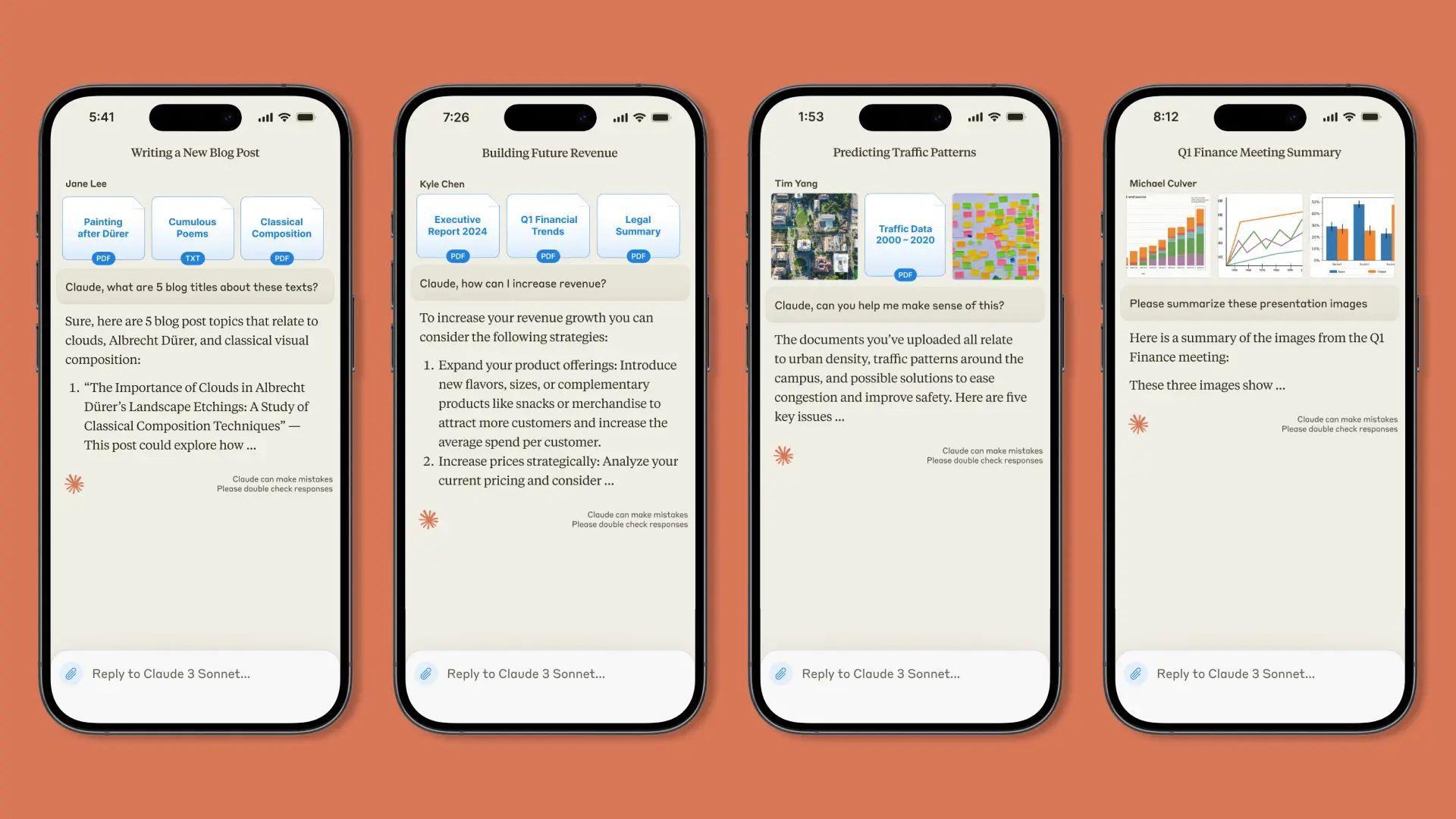To get one step ahead in the ongoing race to make large language models (LLMs) more accessible and impactful, Anthropic launched the Claude iOS app.
Anthropic’s Claude family has previously been available through a web interface, allowing users to interact with the LLM through text-based conversations. The new Claude iOS app brings Claude’s capabilities directly to iPhones, making the AI assistant even more convenient and portable.
What are the features of Claude iOS app?
Claude iOS app makes Claude’s powerful AI capabilities even more accessible, allowing users to interact with the large language model on the go. But how exactly does the Claude iOS app work, and what features does it offer?
The Claude iOS app provides a user-friendly experience for interacting with Claude through your iPhone. Here’s a breakdown of its key functionalities:
- Cross-device syncing: One of the most user-friendly aspects of the app is its ability to seamlessly sync conversation history across devices. This means users can start a conversation with Claude on their computer and pick it up right where they left off on their iPhone, and vice versa.
- Image and file integration: The Claude iOS app uses the iPhone’s capabilities by allowing users to upload photos and files directly from their devices. This enables Claude to analyze images in real time and process information from documents stored on the phone.
- Conversational interface: Similar to the web interface, the Claude iOS app uses a conversational interface. Users can interact with Claude by typing queries and prompts and receiving responses in a natural, chat-like format.
Downloading the Claude iOS app itself comes free of charge. Early users have praised the app’s ability to brainstorm ideas on the move, find answers to quick questions, and even analyze real-world scenes and images captured through the phone’s camera.

Claude Team as an enterprise solution
Alongside the Claude iOS app, Anthropic introduced the Claude Team plan, specifically designed for businesses. This plan caters to the needs of organizations seeking to integrate Claude’s capabilities into their workflows.
The Claude Team plan offers several advantages over the free tier:
- Increased usage: The Team plan provides a significant increase in usage allowance compared to the individual Pro plan. This allows teams to have more frequent and extensive interactions with Claude.
- Team management tools: The Team plan comes with built-in team management features. This empowers organizations to control user access, manage billing, and tailor Claude’s functionalities to their specific needs.
- Access to advanced models: The Team plan grants access to Anthropic’s Claude 3 family of language models, including Opus, Sonnet, and Haiku. These advanced models are claimed by Anthropic to outperform competitors in several key benchmarks.
- 200K context window
- Admin tools and billing management: Access to administrative tools to conveniently control user and billing management for easier onboarding and less overhead.
- Everything in Claude Pro plan
The Claude Team plan is priced at $30 per user, per month. However, there’s a minimum requirement of purchasing licenses to activate the plan, which you may sign up for here.
The iOS app broadens Claude’s reach by bringing its capabilities directly to mobile users. This allows for interaction with Claude on the go, whether it’s for quick questions, brainstorming sessions, or tasks that benefit from Claude’s real-time analysis of images and files captured on the phone.
On the other hand, the Team plan caters to businesses by empowering them to leverage Claude’s functionalities within their workflows. This can translate to improved collaboration among team members and potentially lead to significant productivity gains through Claude’s ability to assist with various tasks and information processing.
It remains to be seen how these developments will unfold in the LLM arena. However, Anthropic’s focus on mobility and enterprise applications suggests a future where AI assistants like Claude become increasingly integrated into our daily lives and professional workflows.
Featured image credit: Anthropic






